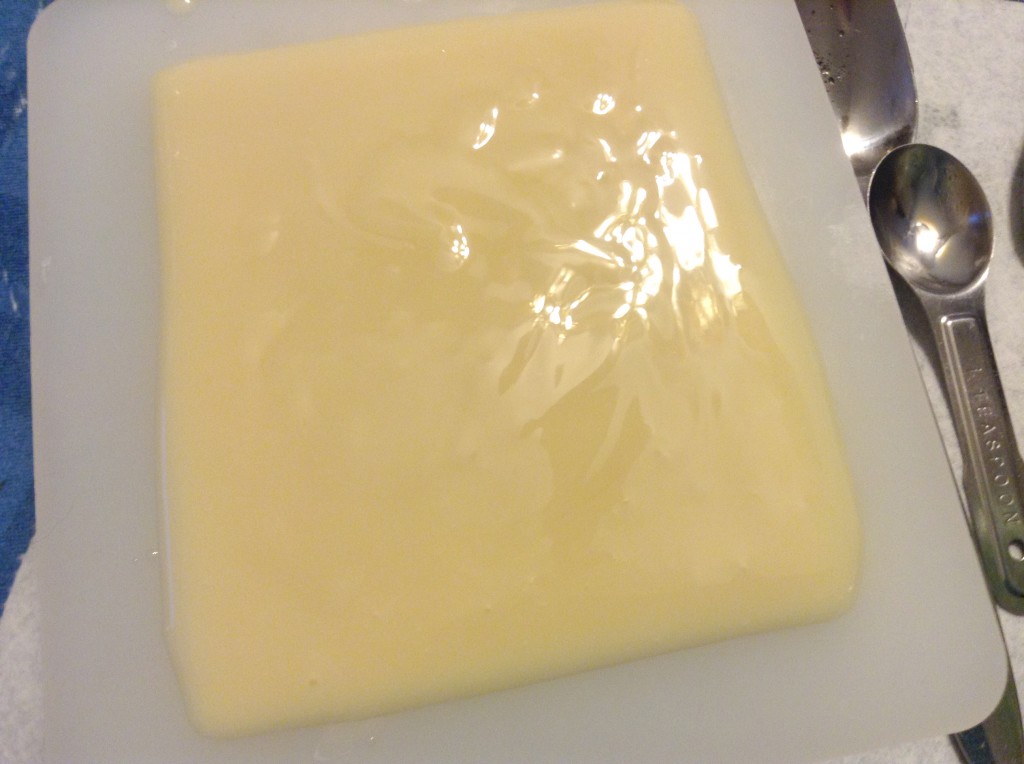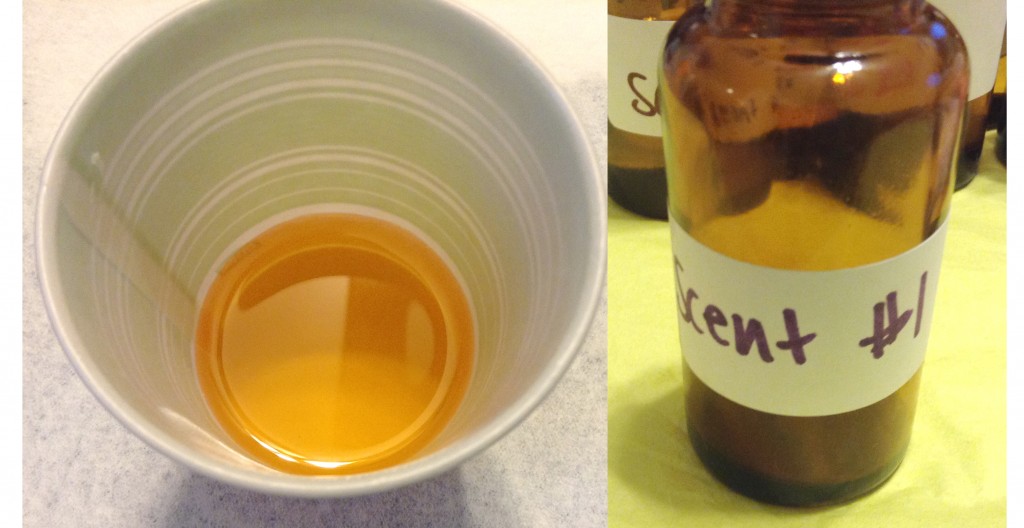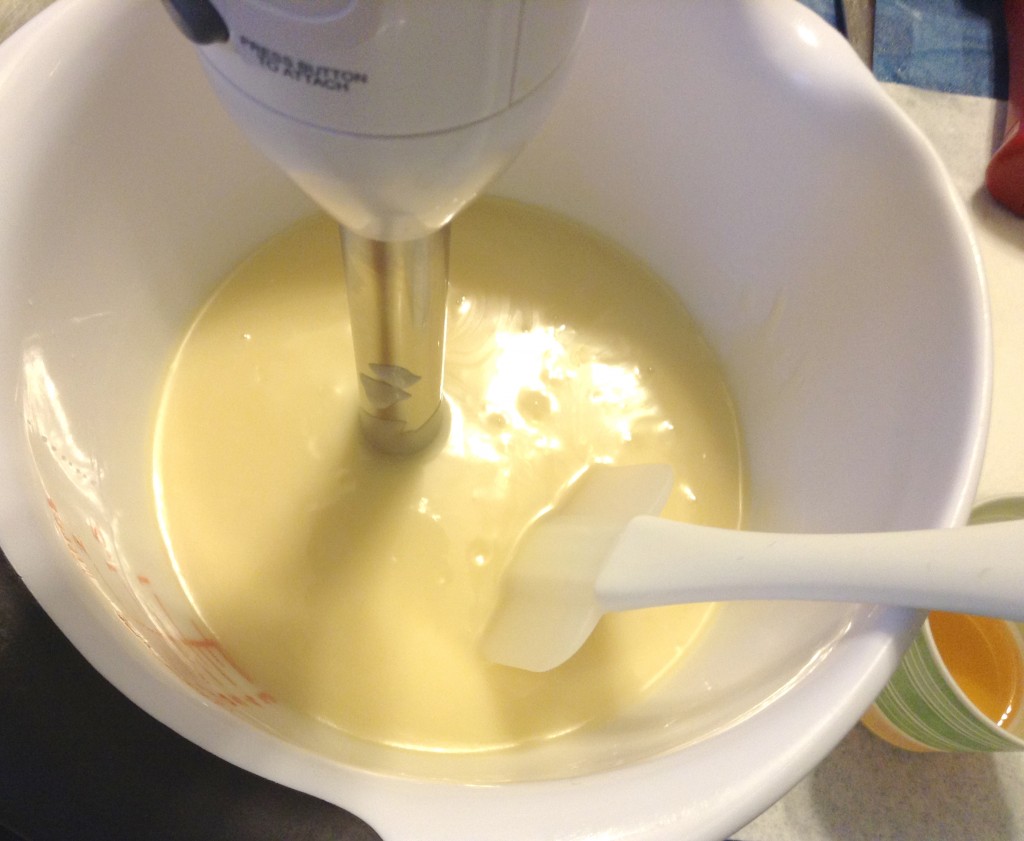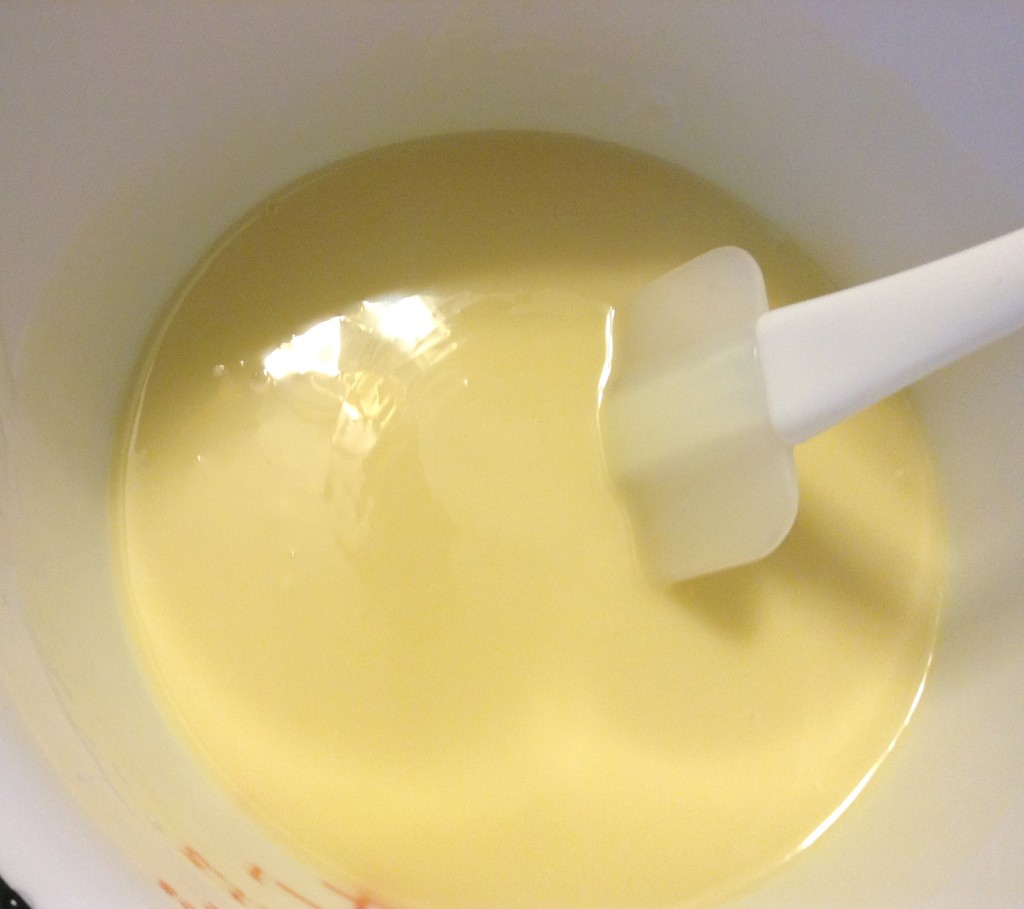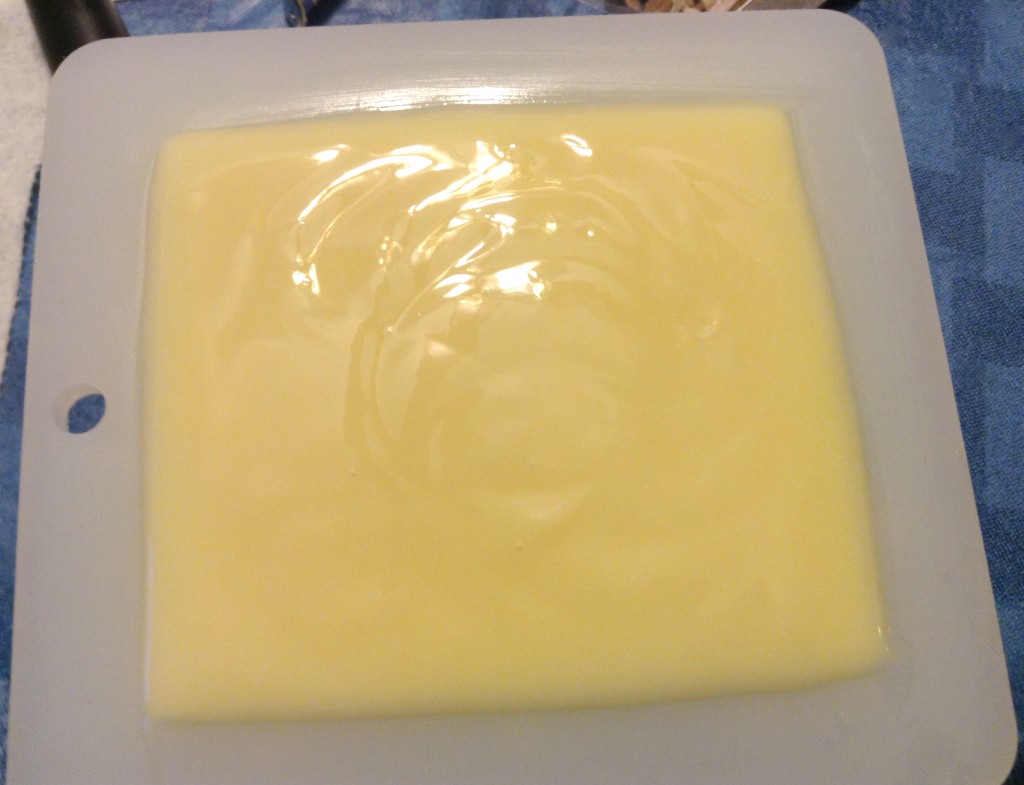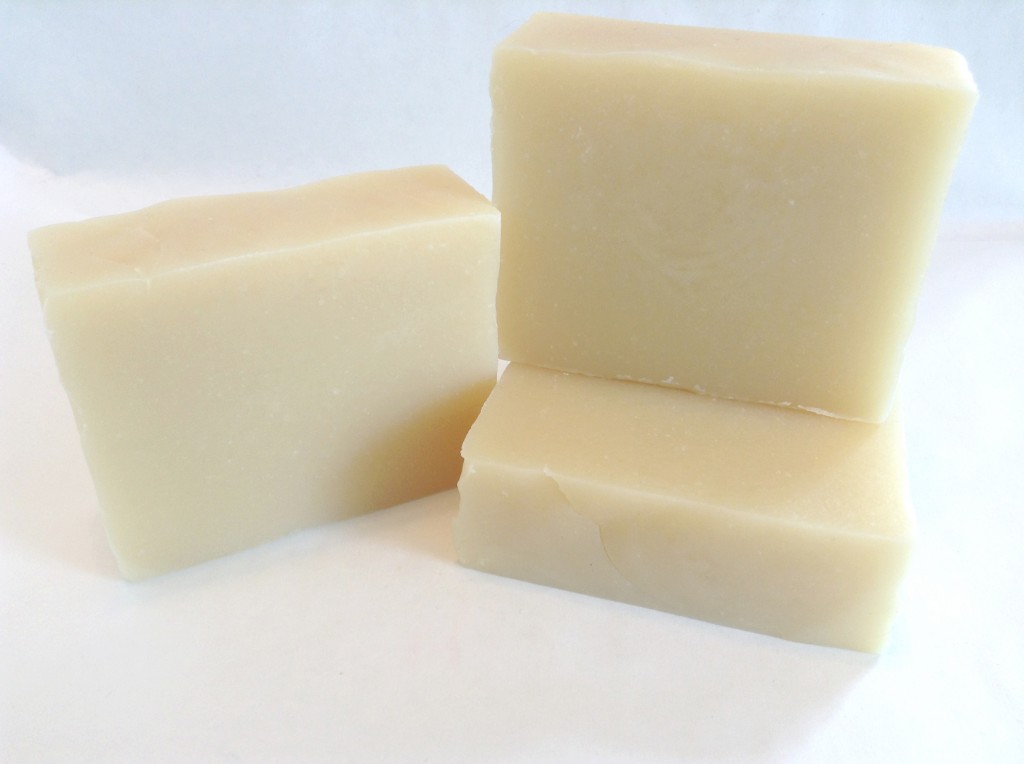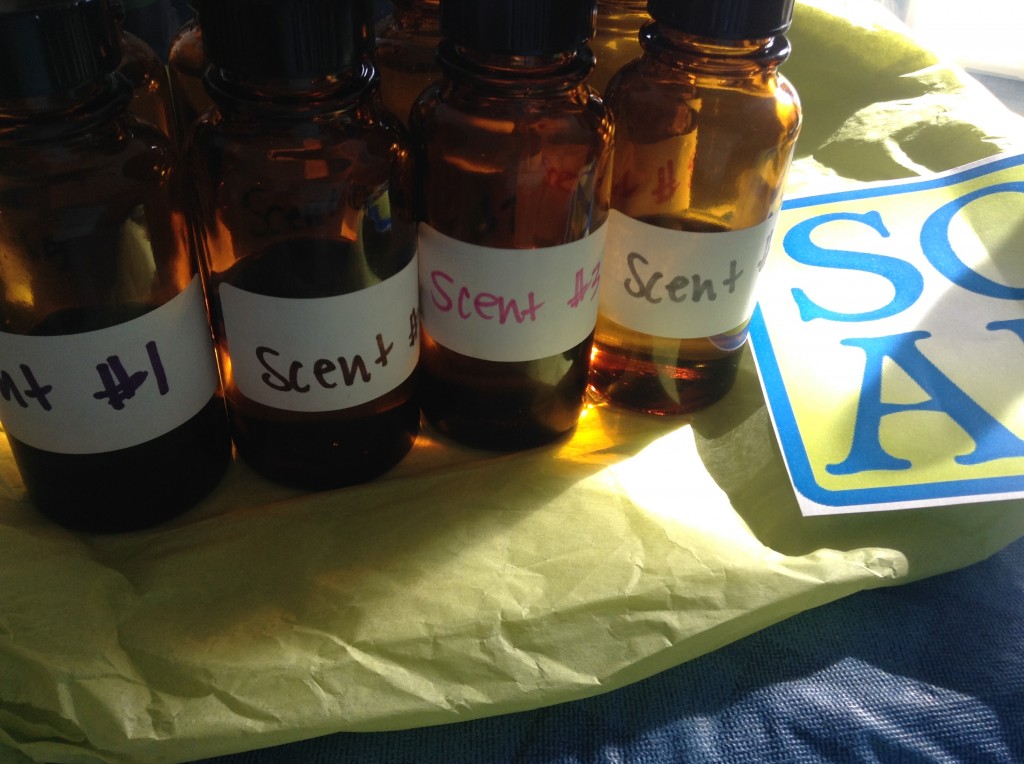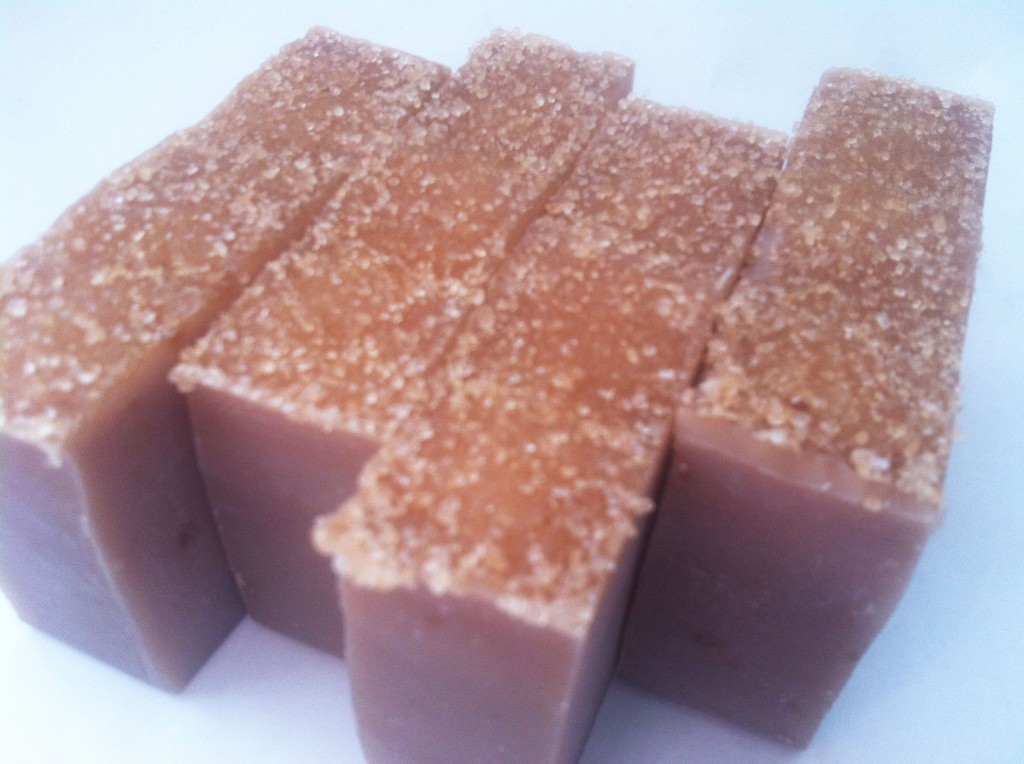I absolutely love this fragrance. It smells really juicy. It could be apple, but it smells more like pear to me, though there is a refreshing bite to it as well. It could be a Granny Smith Apple scent. It smells awesome! I am a big fan of fruity scents in general, and this particular scent might be my favorite of the eight.
Out of the bottle, it’s a clear, light color. Though this bottle had 29 grams, and my recipe calls for 25-26 grams of fragrance, I went ahead and used it all rather than leave three grams, mainly because I’m not sure what to do with just three grams of fragrance.
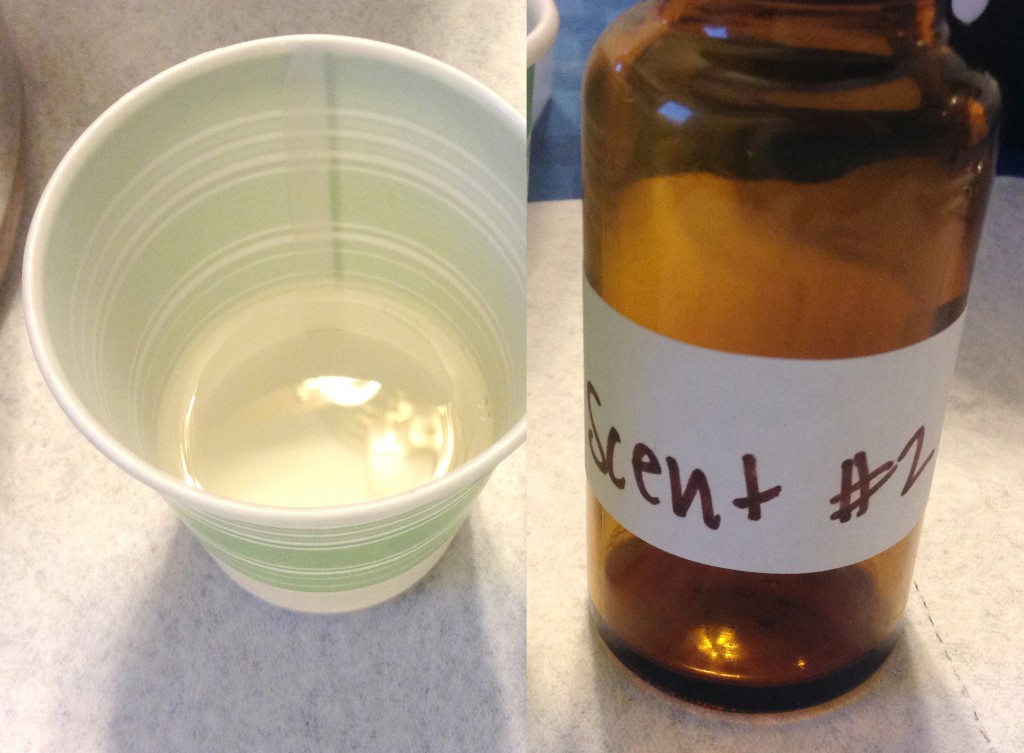 As I did with the first fragrance, I used a recipe with 45% olive oil, 25% coconut oil, 25% sustainable palm oil, and 5% castor oil. I used full water (38%) and a lye discount of 6%. I combined the lye mixture and oils at approximately 100 degrees. I blended the oils and lye to a very light trace. I used no additives or colorants.
As I did with the first fragrance, I used a recipe with 45% olive oil, 25% coconut oil, 25% sustainable palm oil, and 5% castor oil. I used full water (38%) and a lye discount of 6%. I combined the lye mixture and oils at approximately 100 degrees. I blended the oils and lye to a very light trace. I used no additives or colorants.
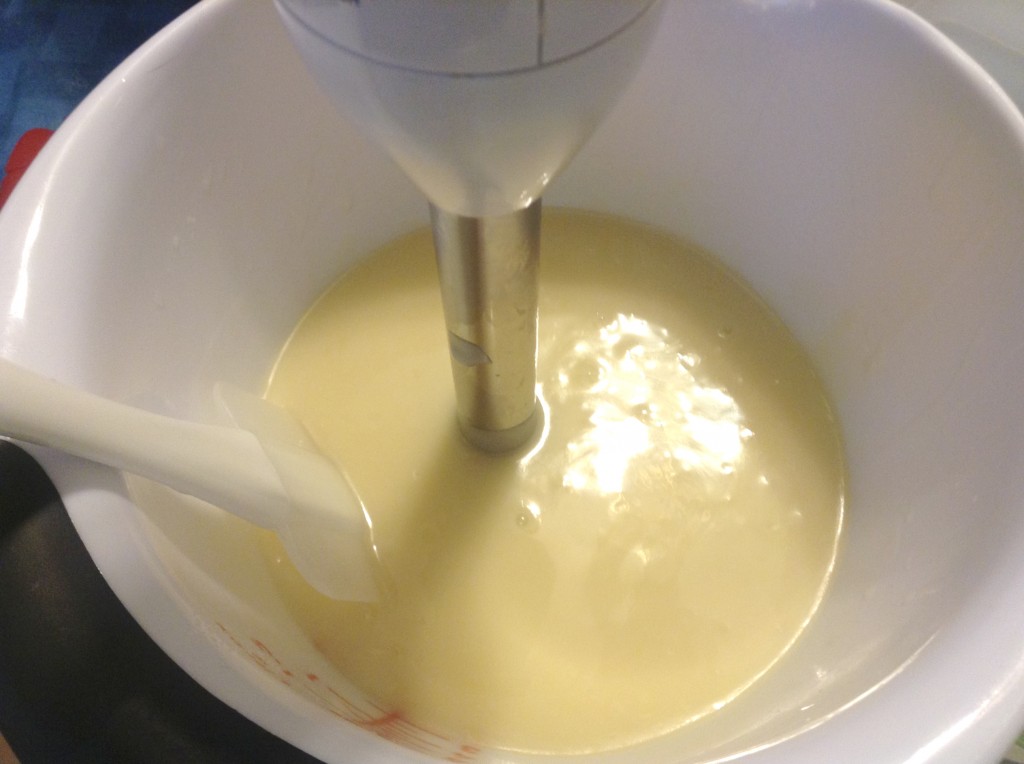 Then I added the fragrance. I forgot to take a picture of the soap batter in the bowl after I combined the fragrance, but there was absolutely no change in color. The fragrance did not accelerate. If anything, it seemed to reverse trace a little bit. I wound up blending the soap a little bit more to thicken it before pouring it in the mold, and the fragrance didn’t misbehave at all. It was very easy to work with.
Then I added the fragrance. I forgot to take a picture of the soap batter in the bowl after I combined the fragrance, but there was absolutely no change in color. The fragrance did not accelerate. If anything, it seemed to reverse trace a little bit. I wound up blending the soap a little bit more to thicken it before pouring it in the mold, and the fragrance didn’t misbehave at all. It was very easy to work with.
I poured the soap into the mold. As you can see, the soap batter is the same natural shade it would have been without any fragrance.
I gelled the soap and unmolded it. As you can see, there is absolutely no discoloration.
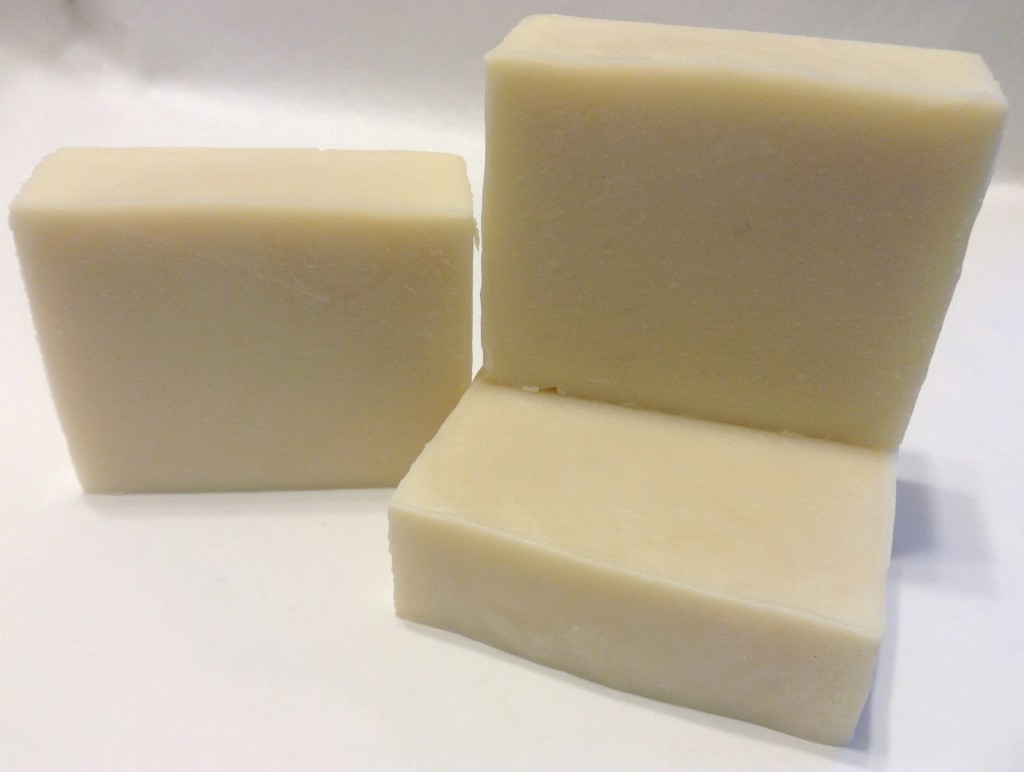 In fact, I realized that it discolored even less than scent #1. I didn’t think #1 discolored, but after seeing it next to #2, you can tell it does discolor the tiniest bit.
In fact, I realized that it discolored even less than scent #1. I didn’t think #1 discolored, but after seeing it next to #2, you can tell it does discolor the tiniest bit.
 Fragrance #1 is on the right, and #2 is on the left. Fragrance #2 remains a beautiful creamy beige—very nearly white.
Fragrance #1 is on the right, and #2 is on the left. Fragrance #2 remains a beautiful creamy beige—very nearly white.
After gelling the soap, I noticed that the fragrance is not quite as strong as I’d like, and I will be interested to see how it does after a cure. I think one way to get around the problem of a light scent is not to gel the soap and to use more fragrance. However, for the purposes of testing, I think it’s important to see how the fragrance holds up to gelling. I do wish the scent were stronger after gelling it, but it is by no means completely dissipated.
Two thumbs way up! I love, love, love this scent. I want to find out what it is and buy it immediately. If you like fruity, juicy type scents, you will want to add this to your spring and summer line for sure. It’s an excellent summery scent, and I can see it working well with shades of green, white, yellow. My mouth is honestly watering just sniffing it. Bramble Berry, you MUST sell this one!
UPDATE: Several hours after I posted this review of the fragrance, I am struggling to detect any scent in the bars at all. I think perhaps this fragrance, while it smells wonderful, just doesn’t hold up well in cold process. It might be wonderful for hot process or lotions. It makes me sad because I absolutely loved it.

